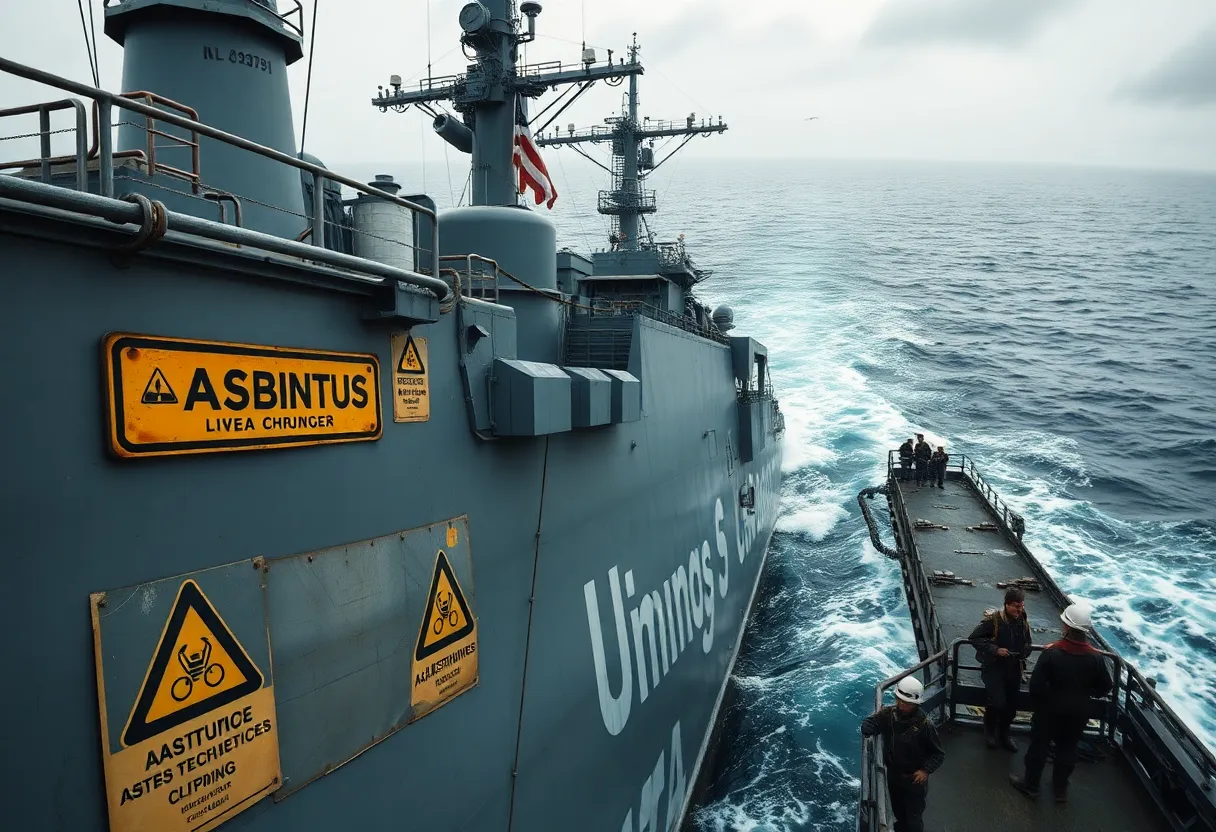News Summary
The USS Bigelow, a Cold War naval destroyer, has a troubling history linked to asbestos exposure that jeopardizes the health of its veterans. Despite its innovative design, extensive asbestos use led to serious health issues among crew members, including mesothelioma and asbestosis. Survivors now face a battle for justice and compensation for their exposure during service. The case of the USS Bigelow highlights the urgent need for awareness regarding the dangers of asbestos in military settings.
USS Bigelow: Asbestos Legacy Puts Veterans at Risk
The USS Bigelow (DD-942), a naval destroyer launched during the Cold War, stands as a formidable reminder of innovation and valor. But beneath its gleaming surface lies a dark history—one stained by the deadly legacy of asbestos, an insidious material that threatened the health of countless Navy veterans. As the Bigelow carried out its duties from 1957 to 1982, it unknowingly placed its crew members in jeopardy of developing life-threatening conditions, such as pleural mesothelioma and asbestosis.
A Ship Built on a Toxic Foundation
The USS Bigelow was a Forrest Sherman-class destroyer, a class of ships that revolutionized naval design post-World War II. Ornately named in honor of Watertender Second Class Elmer Charles Bigelow, who made the ultimate sacrifice during a shipboard fire aboard the USS Fletcher, the vessel was constructed with extensive use of asbestos—a decision made in ignorance of its deadly effects. Asbestos was favored for its strength and fire-resistance properties, but the reality was starkly different. It became a ticking time bomb for thousands of sailors.
The Silent Killer on Deck
Asbestos was ubiquitous aboard the Bigelow. Its fibers were woven into the very fabric of the ship’s infrastructure—lighting, piping, and engine components—leading to immediate and long-term health risks to crew members. Fireproof suits, boiler insulation, and even floor tiles contained this toxic mineral. As daily operations wore on, the material crumbled, sending invisible fibers into the air. These harmful particles could linger for hours, infiltrating the ship’s ventilation system and contaminating the entire vessel.
Engine Rooms and Boiler Spaces were particularly hazardous. Wrapped in asbestos to protect against high heat, the steam pipes, turbines, and boilers readied for service became liabilities whenever maintenance took place. The crew members, often unaware of the lurking danger, carried these fibers home on their clothing, further spreading the crisis.
Health Consequences: A Hidden Toll
The implications of such widespread exposure to asbestos were catastrophic. Survivors may not manifest symptoms of asbestos-related diseases for decades, making early detection an elusive challenge. As the years progressed, many veterans who served on the USS Bigelow began to report alarming symptoms, with diagnoses of mesothelioma or lung cancer emerging among the ranks. With common knowledge of these diseases still developing, many veterans struggled to connect their service with their declining health.
Veterans Seeking Justice
For veterans who served on the USS Bigelow and have since been diagnosed with mesothelioma or other asbestos-related conditions, options for compensation exist. They may qualify for benefits from the Department of Veterans Affairs if they can prove a link between their illness and asbestos exposure during service. Time is of the essence; strict deadlines known as statutes of limitations apply, placing added urgency on filing claims. Whether through civil lawsuits or VA benefits, understanding available options and acting swiftly is crucial for affected veterans.
Moving Forward: Awareness and Advocacy
The story of the USS Bigelow serves as a harrowing example of the broader implications of asbestos exposure in military service. It illuminates the need for awareness of this hazardous material and the diseases stemming from it. Veterans, like those who served aboard the Bigelow, deserve the opportunity to seek justice and the compensation necessary to confront the daunting challenges faced after exposure to asbestos.
Understanding the risks associated with a ship built on a toxic foundation is vital for honoring the memories of those who served and delivered protection during pivotal moments of American history. Their sacrifice should not be overshadowed by the hidden dangers presented by the materials they trusted to protect them in moments of danger.
As we navigate the often treacherous waters of awareness and education regarding asbestos exposure, one thing is clear: the legacy of the USS Bigelow is one that demands attention and the collective support of society, ensuring that our veterans receive the respect and care they deserve.



















